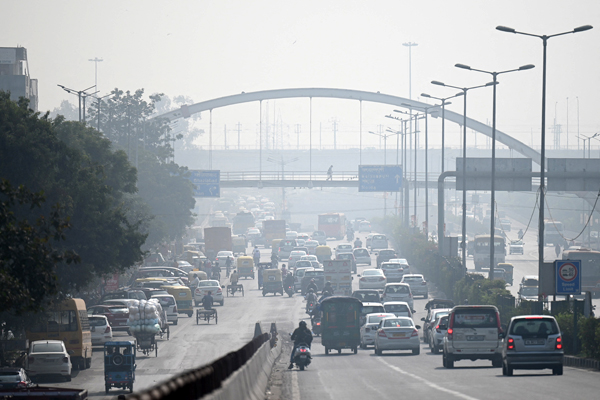Prime
Joyful living in tropical weather

Author: Muniini K. Mulera. PHOTO/FILE
What you need to know:
- Why the sun has never given up on the tropics is a mystery. The urban people there hardly take notice of her.
Dear Tingasiga:
In a conversation this weekend with a friend in Kabaare, Kigyezi, she reported that it was distressingly cold in her house, even for one born and raised in that land of beautiful mountains and valleys, famed for its cold nights and mornings, and perfectly warm afternoons. I quickly checked the weather report for Kabaare, and the temperature was 16 degrees Celsius.
Conversations about cold temperatures trigger memories of a childhood of shoeless feet, short pants and short sleeved shirts that were the only barrier against the early morning or nighttime chill. Our mother would encourage us to wake up in the wee hours, occasionally assisting the process with a little sprinkle of cold water on our sleepy heads, an efficient alarm clock that unfailingly yielded the desired objective.
My brothers and I would pick up our containers, dash to the spring water well half a kilometre away, fetch the precious liquid and return in time to enjoy a breakfast of warm porridge, followed by a mandatory warm bath before embarking on the two-kilometre walk to Kihanga Boys Primary School.
Perched atop of a steep hill, our school would be invisible to us, for a thick white morning mist would still be reluctant to ease its embrace.
Legend has it that stubbing one’s toe was a painless experience, for the feet would be allegedly too cold to feel anything. It was said that it would not be until later in the morning that the victim would “hear” a throb in the injured toe, announcing the onset of difficult days ahead.
My feet must have been the exception, for I recall the immediate misery of encounters with sharp stones as I chased after my swift older brother Byaruhanga. I would “hear” the pain within a microsecond and inform my companions with a crying spell delivered with varying pitch and tempo.
My brother, given to easy laughter, would encourage me to give up the drama and hurry up the hill, lest we should be late and earn the wrath of our teacher who would be ready to cane the patient. So, there was no question of sitting down in self-pity or reporting the matter to any teacher.
The classrooms had cement floors, an architectural decision that is suggestive of malice by the colonial administrators who imposed western standards on our forebears. I did not know it at the time, but our people’s choice of amashe (cow dung) over obudongo (mud putty) as flooring material was architectural science at its best. Excellent insulation from heat and cold, and insect-repelling properties made amashe best suited for flooring in the cold highlands of Kigyezi.
In the event, the western ways won, in the name of modernisation. Cement floors, open windows and high walls conspired to keep us feeling cold until a foodless morning break.
Some of my contemporaries still believe that the experience helped us concentrate on what was being taught, a claim about which I do not have an informed opinion.
I was as absent-minded in a warm classroom as I was in a cold one. Efforts by my teachers to persuade me to learn academic stuff were completely futile. How on Earth they considered me worthy of promotion to the next grades remains a mystery. It was not until the end of Primary Four that a light came on and I realised that my mission in life was more than endless fun, daydreaming about soccer, chasing birds from sorghum fields, and laughing at anything and everything.
Now, where were we? Oh yes, the suffering of my friend in her cold house in Kabaare. I confess that I struggled to feel her pain for, as we spoke, I was watching the first snowfall in my Toronto neighbourhood. The thermometer outside was reading minus three degrees Celsius.
The weather experts were forecasting temperatures that would rise to a magnificent seven degrees on Thursday of this week, before retreating to zero by the weekend.
Such forecasts make me feel sorry for those who are suffering under warm weather in the tropics and the southern hemisphere where the sun has taken its winter vacation. It must be painful to spend a whole day under a perfect cloudscape, with more blue than white, with the sun caressing you with the tenderness of a mother, your skin smiling with perfect peace as though the Millennium Kingdom has begun.
How do I survive the cold weather, you ask? As the temperature drops in our neighbourhood, I admire the first snow of the season with an excitement akin to that which engulfed me before an examination in university biochemistry.
I declare a heavy snowfall, such as we had today, to be a mere dusting, and tell my mind to smile, confident that our anticipation will soon be rewarded when our vehicles zig and zag on snow-covered skating rinks previously called roads.
Four months of temperatures falling as low as minus 30 degrees Celsius, not accounting for the windchill that makes one wish one was walking barefooted in a Kigyezi rainstorm instead, should do us some good, before the sun flees north again for a much-needed break from the ungrateful inhabitants of the Equatorial region of Africa.
Why the sun has never given up on the tropics is a mystery. The urban people there hardly take notice of her. The rich spend hours indoors or inside their motor vehicles, in suits and ties or multilayered ladies’ attire, dressed for sumptuous hot lunches underneath concrete ceilings. Even many rural women go about their farming and other labour-intensive work dressed in long dresses.
Rural men consider western coats and trousers to be a sign of progress. One hopes that the Maasai and other residents of the Eastern Rift Valley will not succumb to the foolishness of donning clothes that were developed to meet the needs of people in the cold lands of Mother Earth. I am not optimistic about this.
Judging by the attire of modern Bahima cattle keepers, it may not be long before the Maasai and others follow suit. It will be a pity.
The tropical region, including the highland areas, is paradise on Earth, 12 months a year. You who live there should be grateful to the Lord God for favouring you and enjoy the warmth and gentle coolness that are part of the perfect prescription for joyful living.
Then again, my people say: “abataine maino nibo batunga enyama (the toothless get the meat.)”
Mulera is a medical doctor. [email protected]




